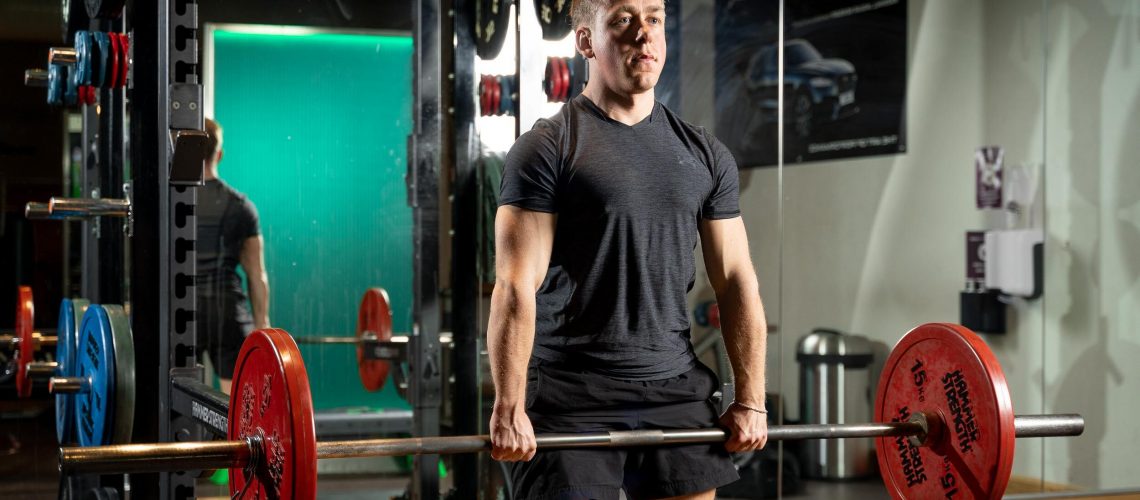One of the biggest challenges people face when they want to put on size is eating more. And once they know that they have to increase their calorie intake, they get sucked into the trap of eating lots and lots of food without ever tracking what or how much they are eating. As a result, they end their bulk being out of shape, depressed and with a load of hard work ahead of them when they start to trim down.
When going through a bulking phase, gaining new muscle tissue is the priority but you want to do it and gain as little fat as possible. Some fat gain is inevitable but to limit that you have to be smart and knowledgeable with your diet.
Before you go into calories, the first thing you need to decide is whether you want to bulk at all. Many people look at themselves in the mirror and are unsure whether to bulk or cut first, this usually happens with people who have a ‘skinny fat’ physique (minimal muscle mass, small amount of body fat).
More often than not, if people, particularly men, with these physiques ask me what they should do to improve their shape, I will tell them to bulk. This is because increasing your calorie intake is going to boost your metabolism and therefore increase your body’s ability to burn calories. When building a physique, building muscle is the foundation, fat loss is the icing on top. So, doing another cut is not going to be beneficial, but building muscle first and then cutting after is what is going to be more beneficial long term.
Once that decision has been made to enter a bulking phase, the next key step, besides the training plan, is working out how many calories you need to be consuming on a daily basis. To do this, you first need to calculate your maintenance calories (calories you need to consume to stay the same weight, based on your activity levels) and a simple way of working this out is multiplying your body weight in pounds by 15. So, for example, if your bodyweight is 170 pounds, you would multiply this by 15 and get 2,550, which is then your maintenance calories.
In order to gain weight through adding muscle, you need to be in a calorie surplus (consuming more calories than you are burning), but it needs to be a moderate surplus of 400-500 calories. This is because your body can only use a certain number of calories for recovery and building muscle and that moderate surplus is going to be the key to achieving that. As mentioned before, where many people slip up is with over-consumption – eating far too many calories than they actually need to. So, while they will indeed add size, they will also gain a considerable amount of body fat which they will have to work even harder to burn off further down the line.
In order to maximise muscle growth and limit fat gain, that moderate surplus on a consistent basis is going to be the required calorie intake. Then, when you do want to go on a cut to reduce body fat, you will be at a much better starting point and should look even better when that period in a calorie deficit ends.
If you find that you are not gaining weight when in that moderate calorie surplus, then add an extra 100 calories on top of your daily intake until you find that you weight is increasing week-on-week. Once again, it depends on your daily output, so it varies with each individual. The important thing is to find out what calorie intake is best for you and to then stick with it.
When it comes to protein, carbohydrates and fats, it varies. Your protein intake should stay the same, no matter what your goal is, but those extra calories should come in the form of carbohydrates and, to a lesser extent, fats. These are the macronutrients that are not only going to fuel your workouts, but also be essential during recovery and building muscle through replacing glycogen storage. This is especially true with carbohydrates because the body looks to glycogen for energy instead of breaking down muscle tissue for energy. Therefore, they are vital for repairing the muscle damage created during resistance training sessions.
Another key point to consider when attempting to gain muscle while limiting fat gain is for how long you go through these phases. Plenty of people like to go on a huge bulk (5-6 months) and then a huge cut (4-6 months) in order to get in the shape that they want. While this may work for some people, for most, you will find, this method is not sustainable.
From a bulking perspective, being in a consistent calorie surplus for this amount of time is going to lead to considerable fat gain, even if that surplus is moderate, and by the end, the muscle you have gained will not be particularly visible. In addition, your tolerance to eating that much food for such a long period will be tested considerably and could lead to you sacking off the diet altogether.
This is a similar issue with being in a deficit for this period. You will reach a time, usually after 10-12 weeks, when losing any more fat will be very difficult and your metabolism will not be firing properly due to the low-calorie intake. Therefore, it is pointless to continue as your quality of life will not be enjoyable and you will not actually be losing any more fat.
So, what is the solution? A smarter way to approach this is through interchanging cycles of bulking and cutting. For example, entering a bulking phase for 10-12 weeks before performing a mini-cut (2 weeks) to cut down on the body fat gained form the bulk. Then, if you wanted to add more size, you enter another 10-12 weeks of being in a calorie surplus, before going back into a 2-week deficit. This way, you can add the extra size you want while keeping your body fat levels in check. And, if you decide to go on a longer cut later on, your starting point will be a lot better when it comes to your body composition.
When it comes to doing cardio, ideally you want to keep it low. It would be wise to do some, but your weight training is what has to take absolute priority. Going for walks or even doing the odd high intensity session on the treadmill or the bike can be beneficial for cardiovascular health and can help you avoid going to that excess calorie surplus that will lead to fat gain.
Prioritising weight training when putting on size does not mean that you have to give on your morning walk or your favourite cycle ride, it just means that the most important thing is being consistent with your training and your diet (being in a moderate calorie) surplus. If you do this, then the muscle growth will follow!
So, the important thing to remember for your diet when entering a bulking phase is place yourself in a calorie surplus but a moderate surplus. If you want to grow your muscles but limit fat gain as much as possible, do not over consume. If you do that, you should feel a lot happier with your progress once you reach the end of this phase.
Photo Credit: Envato Elements


